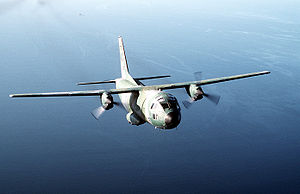
Aermacchi was an Italian aircraft manufacturer. Formerly known as Aeronautica Macchi, the company was founded in 1912 by Giulio Macchi at Varese in north-western Lombardy as Nieuport-Macchi, to build Nieuport monoplanes under licence for the Italian military. With a factory located on the shores of Lake Varese, the firm originally manufactured a series of Nieuport designs, as well as seaplanes.

The Italian Air Force is the air force of the Italian Republic. The Italian Air Force was founded as an independent service arm on 28 March 1923 by King Victor Emmanuel III as the Regia Aeronautica. After World War II, when Italy became a republic following a referendum, the Regia Aeronautica was given its current name. Since its formation, the service has held a prominent role in modern Italian military history. The acrobatic display team is the Frecce Tricolori.

Aeritalia was an aerospace engineering corporation based in Italy. It was formed out of the merger of two aviation companies, Fiat Aviazione and Aerfer, in 1969.
Alenia Aeronautica was an Italian aerospace company. Its subsidiaries included Alenia Aermacchi and Alenia Aeronavali.

The Rolls-Royce AE 2100 is a turboprop developed by Allison Engine Company, now part of Rolls-Royce North America. The engine was originally known as the GMA 2100, when Allison was a division of former corporate parent General Motors.

The AMX International AMX is a ground-attack aircraft jointly developed by Brazil and Italy. The AMX is designated A-11 Ghibli by the Italian Air Force and A-1 by the Brazilian Air Force. The Italian name, "Ghibli", is taken from the hot dry wind of the Libyan desert.

The Short C-23 Sherpa is a small military transport aircraft built by Short Brothers. It was designed to operate from unpaved runways and make short takeoff and landings (STOL). It features a large squared fuselage with a full-width rear cargo door/ramp. The C-23A and C-23B are variants of the Short 330 and the C-23B+ is a variant of the Short 360. 60 aircraft were used, it was finally retired from US service in 2014, but remains in international service. Although it was widely used for other uses it was originally the winner of an early 1980s competition for a light cargo aircraft to deliver cargo, especially aviation parts, for EDSA. While the C-23 was a new production, as was the C-23B, the C-23B+ were actually Shorts 360, with the tail and rear fuselage of a C-23. One of the differences between the C-23 and C-23B, is that the latter had cabin windows. The aircraft has a substantial amount of civilian use and also was operated by the U.S. Forestry Service and NASA for example. The NASA C-23 is still in service and used for research. The aircraft continues in service with the Philippines and Djibouti, as well as various civilian and governmental agencies, such as the aforementioned NASA research Sherpa.

The de Havilland Canada DHC-5 Buffalo is a short takeoff and landing (STOL) utility transport turboprop aircraft developed from the earlier piston-powered DHC-4 Caribou. The aircraft has extraordinary STOL performance and is able to take off in distances much shorter than even most light aircraft can manage.

The Dornier Do 27 is a German single-engine STOL utility aircraft that was designed and manufactured by Dornier GmbH. It was notable for being the first mass-produced aircraft in Germany following the end of the Second World War.

Giuseppe Gabrielli was an Italian aeronautics engineer. He is famous as the designer of numerous Italian military aircraft, including the Fiat G.50 Freccia and G.55 World War II fighters.
C27 or C-27 may refer to:

The Alenia C-27J Spartan is a military transport aircraft developed and manufactured by Leonardo's Aircraft Division. It is an advanced derivative of the former Alenia Aeronautica's earlier G.222, equipped with the engines and various other systems also used on the larger Lockheed Martin C-130J Super Hercules. In addition to the standard transport configuration, specialized variants of the C-27J have been developed for maritime patrol, search and rescue, C3 ISR, fire support/ground-attack and electronic warfare missions.

The Aeritalia F-104S Starfighter was a licensed production Italian version of the Lockheed F-104 Starfighter, which served in the Italian Air Force, and was its mainstay from the late 1960s until the beginning of the 21st century. The F-104S also served in the Turkish Air Force until the mid-1990s. The F-104S was the final development of the Starfighter line.

The EADS HC-144 Ocean Sentry is a medium-range, twin-engined turboprop aircraft used by the United States Coast Guard in the search-and-rescue and maritime patrol missions. Based on the Airbus Military CN-235, it was procured as a "Medium Range Surveillance Aircraft." The HC-144 is supplied by Airbus Group, Inc, formerly EADS North America, and is built in Spain by Airbus Military.

The Lockheed MartinKC-130 is a family of the extended-range tanker version of the C-130 Hercules transport aircraft. The KC-130J is the latest variant operated by the United States Marine Corps (USMC), with 48 delivered out of 79 ordered. It replaced older KC-130F, KC-130R, and KC-130T variants for aerial refueling. USMC reserve unit, VMGR-452 operated 12 KC-130T aircraft until May 2021; this was the last USMC reserve unit that operated the legacy KC-130s, completing the Corps' transition to the more advanced Super Hercules.
Vittorio Sanseverino was an Italian pilot. Besides his combat experience in World War II, he is known for having test-flown a large part of the aircraft built by FIAT for the postwar Italian Air Force, including the Fiat G.91, the Fiat G.222, the North American F-86D Sabre and the F-104 Starfighter.

Alenia Aermacchi was a company active in the aeronautics sector, with offices and plants in Venegono Superiore, Varese, Turin Airport in San Maurizio Canavese, Province of Turin and Pomigliano d'Arco, Province of Naples. From 1 January 2016, the activities of Alenia Aermacchi merged into Leonardo's Aircraft and Aerostructures Division.
The Italian Armed Forces aircraft designation system is a unified designation system introduced by the Italian Armed Forces in 2009 for all Italian military aircraft. The system is based on the United States Armed Forces 1962 United States Tri-Service aircraft designation system.



























